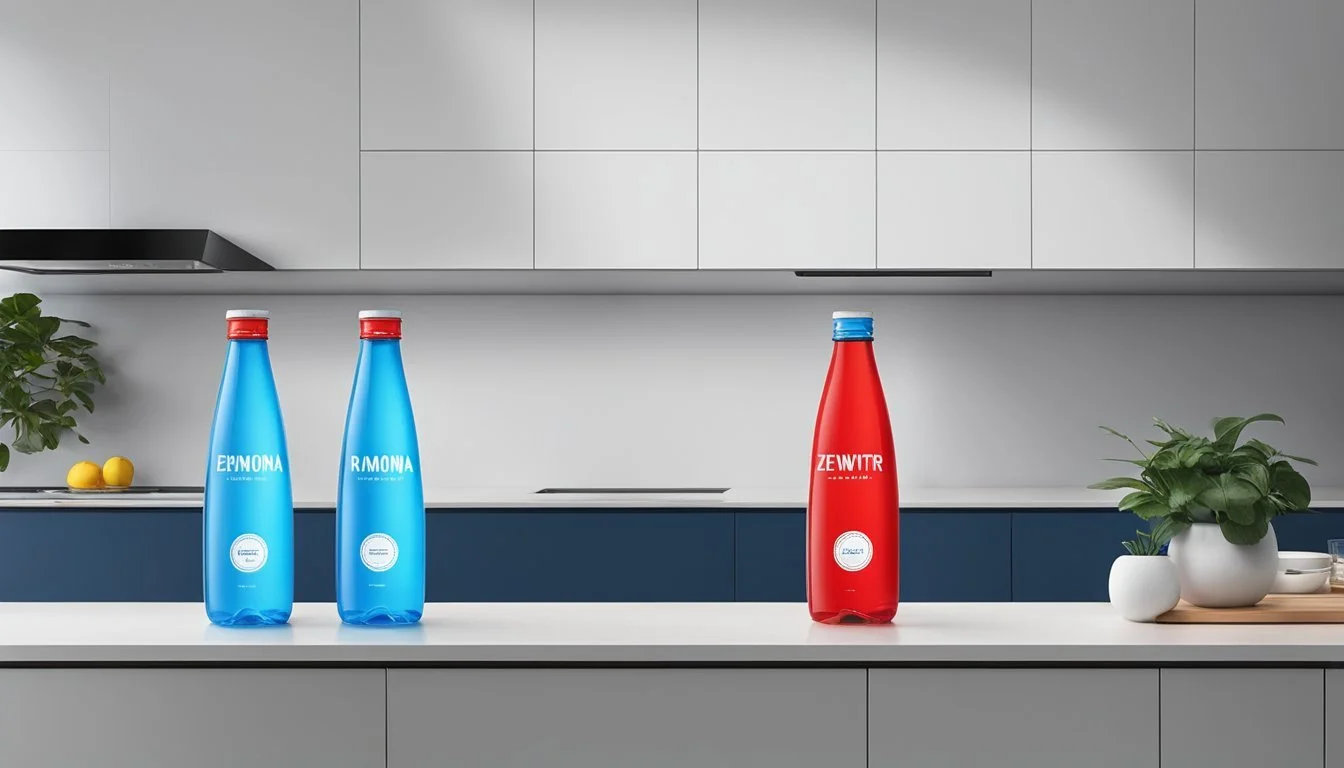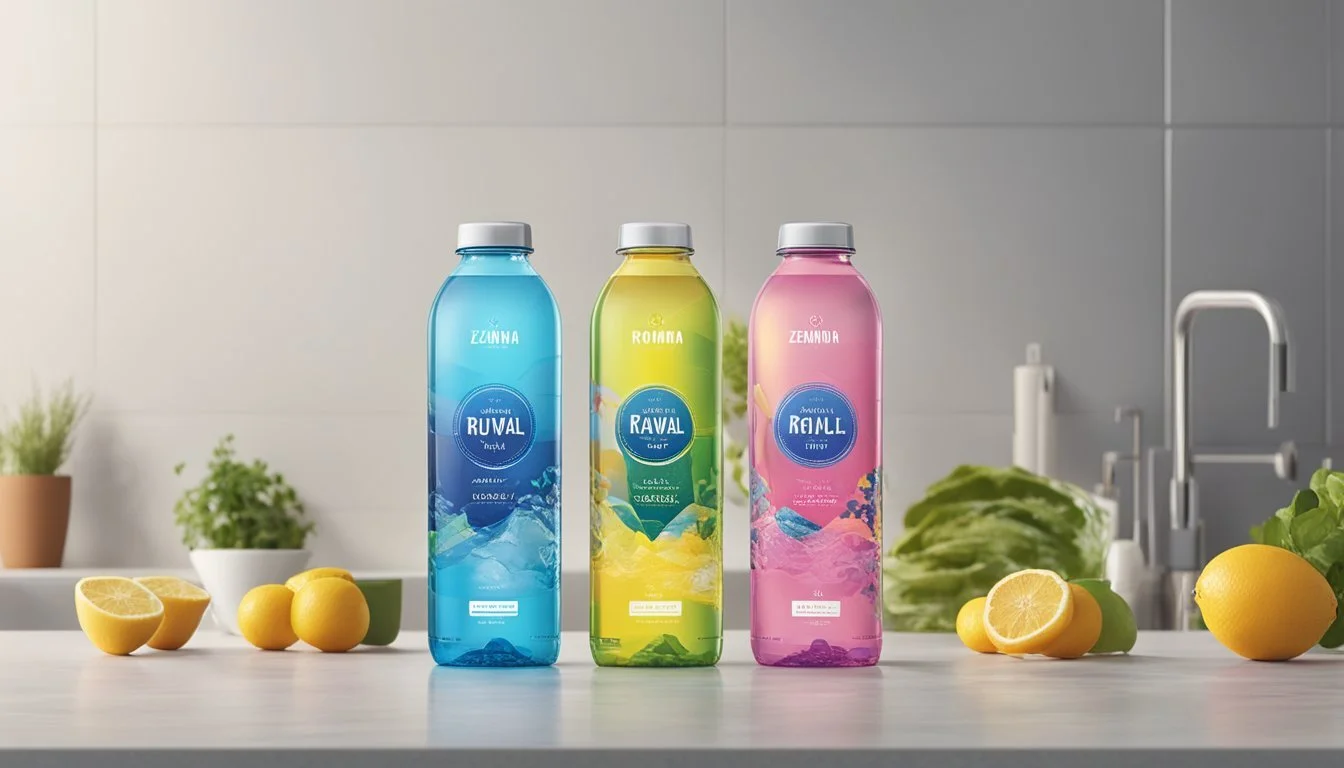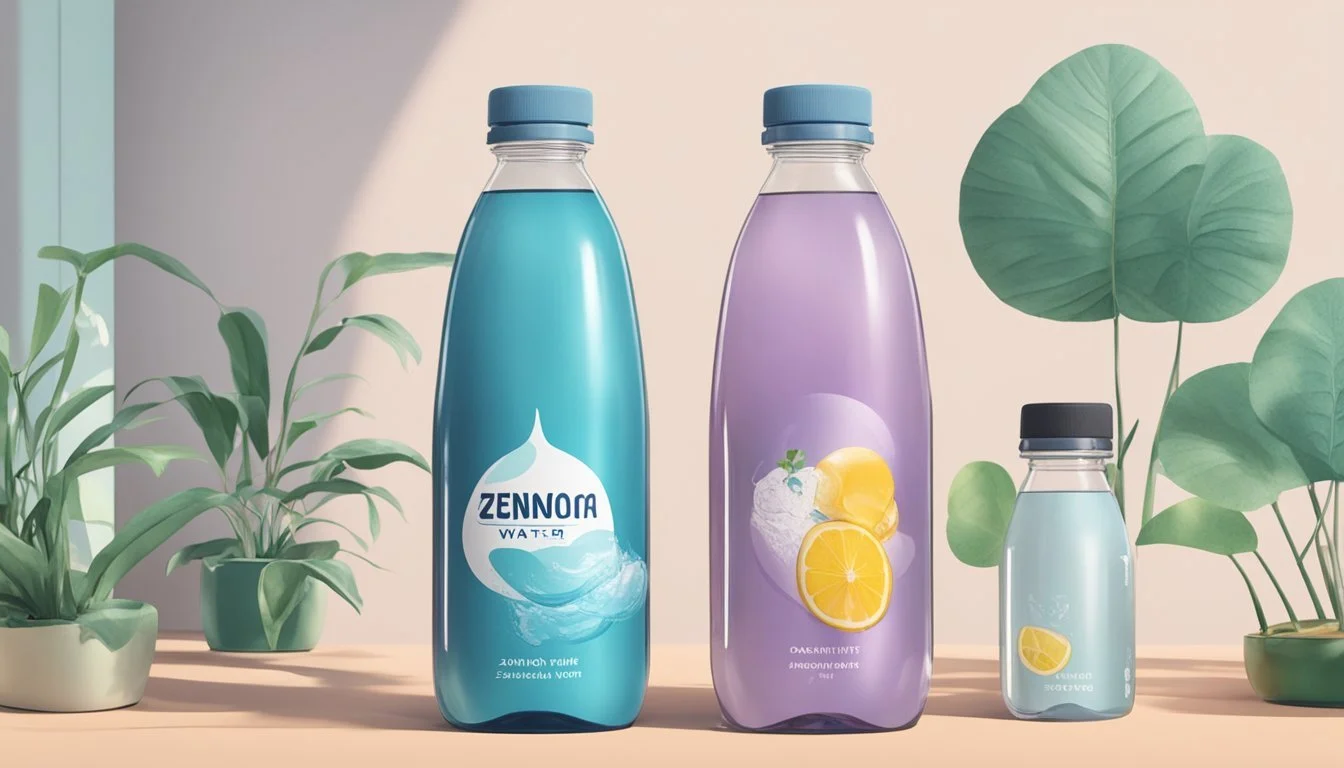Zenwtr vs. Ramona
Which Bottled Water is Better for You?
When it comes to choosing between ZenWTR and Ramona bottled water, consumers often seek clarity on which one stands out. ZenWTR, known for its natural alkalinity and pH of 9.5, provides a smooth taste due to its higher mineral content. This positions it as a premium option in the bottled water market. The attention to both ecological impact and hydration quality makes ZenWTR a compelling choice for many.
On the other hand, Ramona features its own unique benefits tailored to a different set of preferences. While detailed insights about Ramona's attributes are less prevalent, the brand emphasizes purity and taste, appealing to a specific audience seeking straightforward hydration without added complexities. Comparing price points and taste profiles may further help in deciding which brand aligns better with individual preferences.
Choosing between these two brands hinges on specific needs and preferences regarding taste, mineral content, and even ecological impact. By evaluating the distinctive qualities of ZenWTR and Ramona, readers will be equipped with the information necessary to make an informed choice. This comparative analysis aims to clarify which bottled water might best meet their hydration needs and lifestyle values.
The Foundational Concepts
ZenWTR and Ramona are prominent figures in the bottled water market, each bringing unique qualities and brand philosophies. This section explores the core elements of bottled water and provides an overview of both brands.
Understanding Bottled Water
Bottled water serves as a convenient hydration option, available in various forms such as natural spring water, purified water, and alkalized water. Key factors influencing consumer choice include taste, mineral content, and source.
Alkalinity, measured by pH levels, is significant as it impacts both taste and potential health benefits. Alkaline water is believed to neutralize acid in the body, although scientific support varies. Vitamins, electrolytes, and purification processes also play a role in differentiating bottled water options.
ZenWTR and Ramona Brands Overview
ZenWTR prides itself on natural alkalinity with a pH level of 9.5, placing it in the premium market segment. Its sourcing from natural springs ensures minimal processing, preserving minerals for a smoother taste. ZenWTR emphasizes sustainability by using bottles made from 100% recycled ocean-bound plastic, aligning with its mission to combat plastic pollution.
Ramona focuses on delivering high-quality spring water, prioritizing purity and a fresh taste. Ramona’s sourcing practices ensure a clean, crisp hydration experience, catering to health-conscious consumers. The brand also engages in sustainable practices but is more traditionally positioned within the bottled water industry compared to ZenWTR's innovative approach.
Quality and Purity
ZenWTR and Ramona are compared based on their water sources, purification processes, mineral content, health benefits, taste, and pH levels, featuring clear differentiators important for consumers.
Water Source and Purification Process
ZenWTR prides itself on its meticulous filtration process to ensure purity. The water undergoes reverse osmosis, removing impurities and contaminants effectively. ZenWTR sources its water from natural springs, maintaining a high standard of quality. The source adds valuable minerals while keeping the water's taste clean.
Ramona, on the other hand, sources its water from protected underground aquifers. The purification involves multiple stages, including carbon filtration and UV exposure. This multi-step approach ensures that the water maintains its natural quality without introducing artificial elements.
Mineral Content and Health Benefits
ZenWTR is known for its natural alkalinity with a pH level of 9.5, higher than average tap water. This high pH level is believed to offer health benefits like improved hydration and balancing body acidity. The water includes beneficial minerals such as calcium, magnesium, and potassium, contributing to its unique profile.
Ramona focuses on retaining the essential minerals naturally present in its source. The water contains a balanced mix of electrolytes and minerals, supporting overall hydration and health. Key minerals include sodium, bicarbonate, and chloride, which can aid in maintaining electrolyte balance in the body.
Taste and pH Levels
ZenWTR's taste is often described as crisp and clean, attributed to its high purity levels and alkaline nature. The presence of essential minerals enhances the taste without overpowering. The pH level of 9.5 ensures a smooth drinking experience, appealing to those who prefer slightly alkaline water.
Ramona provides a refreshing and neutral taste, thanks to its well-balanced mineral content and effective purification methods. The pH level typically ranges around 7-8, offering a more neutral flavor that can be preferable for those who seek a classic water taste. This balanced profile makes Ramona a versatile choice for daily hydration.
Health and Hydration
Assessing bottled water brands like ZenWTR and Ramona requires a close look at their impacts on health and hydration. Key considerations include alkaline water's effect on body pH, the role of electrolytes in physical performance, and how hydration influences energy levels.
Alkaline Water and Body PH
One of the distinguishing features of ZenWTR is its alkaline water with a pH of 9.5. Proponents argue that alkaline water can neutralize acid in the bloodstream and improve body's pH balance. This may support better digestion and reduce acid reflux. Ramona, typically neutral in pH, lacks this benefit.
For ZenWTR, the higher pH level is marketed to enhance overall well-being. However, there is limited scientific evidence to fully endorse these claims. While some people report feeling more balanced, the medical community remains cautious. Consumers should consider these points when making a choice.
Electrolytes and Physical Performance
Electrolytes such as sodium, potassium, and magnesium are critical for maintaining fluid balance and muscle function. ZenWTR includes added electrolytes, which can enhance physical performance, particularly during exercise. These electrolytes help prevent dehydration by facilitating better water absorption in the body.
Ramona generally does not contain added electrolytes, focusing instead on purified water. This makes ZenWTR a preferred option for athletes or those seeking to improve workout efficiency. Enhanced hydration through electrolytes can support better stamina and reduced fatigue.
Hydration and Energy
Proper hydration is vital for maintaining energy levels throughout the day. Both ZenWTR and Ramona provide essential hydration, but the added electrolytes in ZenWTR can offer additional support for energy maintenance, especially during physically demanding activities.
Inadequate hydration can lead to decreased cognitive function, headaches, and poor skin health. ZenWTR’s formulation aims to address these issues more effectively than standard bottled water. By promoting efficient hydration, ZenWTR can contribute positively to daily energy levels and skin appearance, making it an attractive option for health-conscious consumers.
Price and Accessibility
ZenWTR and Ramona differ significantly in their cost and availability, impacting consumer decisions based on budget and convenience. Understanding these factors can help you choose which brand fits your needs best.
Cost Comparison Between ZenWTR and Ramona
ZenWTR is generally priced higher than Ramona. A standard 500ml bottle of ZenWTR can cost around $2.50 to $3.00 at most retail stores. This premium pricing is often justified by its focus on sustainability and the use of ocean-bound recycled plastic.
Ramona is more budget-friendly, typically costing between $1.00 and $1.50 for a similar-sized bottle. This makes it an attractive option for consumers looking to save money without compromising on hydration.
Considering bulk purchases, ZenWTR offers cases of 24 bottles for approximately $50-$60, while Ramona cases are priced around $20-$30, making Ramona a more economical choice for large quantities.
Availability and Consumer Convenience
ZenWTR has a widespread presence, especially in health-focused retail channels like Whole Foods Market and specialized grocery stores. Being marketed as an eco-friendly choice, it caters to consumers who prioritize sustainability. ZenWTR is also available for online purchases through major e-commerce platforms.
Ramona, on the other hand, is more commonly found in conventional grocery stores and convenience stores. This wider availability makes it more accessible to a larger audience who may prioritize ease of purchase over brand-specific attributes.
While ZenWTR’s availability in premium stores caters to a niche market, Ramona’s broader distribution ensures it meets general consumer demand effectively. Both brands offer online purchasing options, though ZenWTR’s targeted health stores might appeal more to environmentally-conscious customers.
Market Position and Brand Trust
ZenWTR and Ramona have distinct positions in the competitive bottled water market, each leveraging strong marketing strategies and cultivating significant customer trust. The following sections delve into the aspects of brand reputation and marketing that influence consumer perceptions and loyalty.
Brand Reputation and Customer Trust
ZenWTR boasts a reputation rooted in sustainability. Its packaging uses 100% recycled ocean-bound plastic, distinguishing it as an eco-conscious choice. Consumers trust ZenWTR for its commitment to environmental responsibility, which is reflected in its marketing and product quality.
Ramona, on the other hand, is marketed as a luxury brand, emphasizing premium quality and taste. It is often found in high-end stores and prestigious events, enhancing its image of exclusivity and refinement. Trust in Ramona comes from its consistent quality and presence in upscale markets.
Both brands face competition from well-known bottled water brands like Fiji, Evian, Dasani, and Aquafina. Despite this, ZenWTR and Ramona maintain a loyal customer base due to their unique selling propositions.
Marketing Strategies and Consumer Perception
ZenWTR's marketing strategy focuses heavily on sustainability and environmental impact. It uses social media campaigns to highlight its use of ocean-bound plastic and engages with eco-conscious influencers to broaden its reach. This strategy resonates well with environmentally aware consumers and sets ZenWTR apart from competitors like Aquafina and Dasani.
Ramona leverages traditional luxury marketing techniques, including placement in high-end events and endorsements from celebrities. Its advertisements focus on the premium nature of the water, aiming to attract consumers who prioritize quality and brand prestige. This approach maintains Ramona's image as an exclusive choice in the bottled water market.
Both brands employ distinct strategies to establish and maintain their market positions. While ZenWTR appeals to environmental values, Ramona targets luxury and exclusivity, creating specific perceptions among consumers.
Design and Functionality
ZenWTR and Ramona bottled waters stand out in design and functionality, aiming to provide both aesthetic appeal and practical use. Key aspects include bottle design and the broad usability across different situations.
Bottle Design and User Experience
ZenWTR bottles are crafted from 100% recycled ocean-bound PET (rPET) plastic, making them eco-friendly. The design emphasizes minimalism with sleek, transparent packaging that highlights the purity of the water inside. ZenWTR’s bottle caps are easy to open, enhancing user convenience.
Ramona, in contrast, uses standard PET plastic for their bottles. While not as eco-conscious as ZenWTR, Ramona’s bottles are still lightweight and easy to carry. The design features vibrant colors and eye-catching labels, ensuring visibility on store shelves.
Both brands focus on usability, with ergonomic designs that fit comfortably in hand and cup holders. ZenWTR's focus on recycled materials adds an environmental benefit, while Ramona emphasizes visual appeal and conventional convenience.
Functionality and Use Across Different Contexts
ZenWTR's vapor-distilled alkaline water with a pH of 9.5 caters to health-conscious consumers. This makes it suitable for sports, fitness activities, and everyday hydration. The bottle's durability ensures it remains intact during physical activities, from gym sessions to outdoor adventures.
Ramona offers purified water, aiming for a neutral taste profile. This makes it versatile for cooking, mixing with beverages, and general hydration. The functional design makes it a practical choice for office, home, and travel use. Its lightweight nature allows for easy portability without adding unnecessary bulk.
Each brand’s packaging and water type serve specific purposes and contexts, with ZenWTR more focused on health and sustainability, while Ramona balances practicality and broad usability.
More About Zenwtr
Mountain Valley Spring Water vs Zenwtr: Which Bottled Water is Better?
Richard's Rainwater vs Zenwtr: Which Bottled Water is Better?
Whole Foods Italian Still Mineral water vs Zenwtr: Which Bottled Water is Better?
Zenwtr vs Kirkland Signature: Which Bottled Water is Better?






